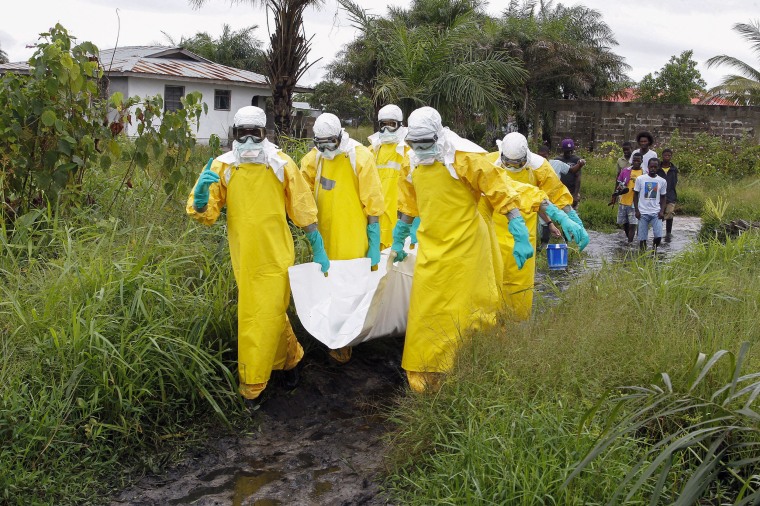The World Health Organization is planning to try using an experimental Ebola vaccine to fight an outbreak of the virus in a remote area of the Democratic Republic of Congo.
The global health agency says 39 people have been reported or confirmed infected with the virus, which kills between 20 percent and 90 percent of victims, depending on the strain and the care they get.
WHO said Monday that the country's government had okayed the used of vaccines to try and stop the spread of the virus.
“We have agreement, registration, plus import permit, everything formally agreed already,” WHO Director-General Dr. Tedros Adhanom Ghebreyesus said. “All is ready now to really use it.”
It’s the ninth Ebola outbreak in the DRC since the virus was first discovered there in 1976, when the country was named Zaire.
The last outbreak was last year.
This outbreak is unlikely to spread like the 2014-2016 epidemic of Ebola in west Africa, which ended up infecting more than 28,000 people and killing 11,000 of them. Plus, WHO said, the DRC is relatively well-prepared to handle Ebola.
But it’s still very worrisome, said Dr. Peter Salama, WHO’s deputy director general for emergency preparedness and response.
“We are very concerned and we are planning for all scenarios, including the worst-case scenario,” Salama said.
“Even though it’s a remote, rural area, which usually gives us a sense of reassurance in the sense of an outbreak, the problem is that we already have three separate locations that are reported cases that cover as much as 60 km (37 miles) or more,” Salama told a news conference.
The area’s near the Congo River, which carries people to the capital of the DRC, Kinshasa; as well as to the Republic of the Congo and to the Central African Republic.
“The overall risk is considered high at the national level due to the nature of the disease,” WHO said.
People have some of the same cultural practices that contributed to Ebola’s explosive spread in Liberia, Guinea and Sierra Leone, including the common use of faith healers and burials that involve handling the body. The virus spreads through bodily fluids, including vomit and blood.
Plus healthcare workers have been infected, and Salama said infected healthcare workers can spread the virus to people they are caring for.
WHO said it had released $1 million to spend on supplies and aid. There are no major roads. It takes 15 days to get to the area by motorbike, so Salama said officials were talking about coordinating helicopter flights and clearing a runway for plans to land.
“It’s going to be tough, and it’s going to be costly to stamp this out,” Salama said.
WHO and the medical group Medecins Sans Frontieres (MSF or Doctors Without Borders) were setting up a lab and a clinic, Salama said.
The main jobs are checking to see how many people are infected and where; whether there have been past cases that went unreported; making sure people know how to bury the dead safely; and testing and treating people with suspected infections.
Most of the cases so far have been recorded around the village of Ikoko Impenge, near the northwestern town of Bikoro, Salama said.
The experimental Ebola vaccine was developed right at the end of the west African epidemic, and tests at the time showed it protected people from the killer virus.
Researchers who tested it used the same strategy that was used to eradicate smallpox in the 1970s. Called ring vaccination, it calls for vaccinating people who have been in contact with patients, and contacts of contacts.
But the vaccine must be kept in especially cold conditions — far below the level of normal freezers — which makes transporting it in such a remote region a challenge.



